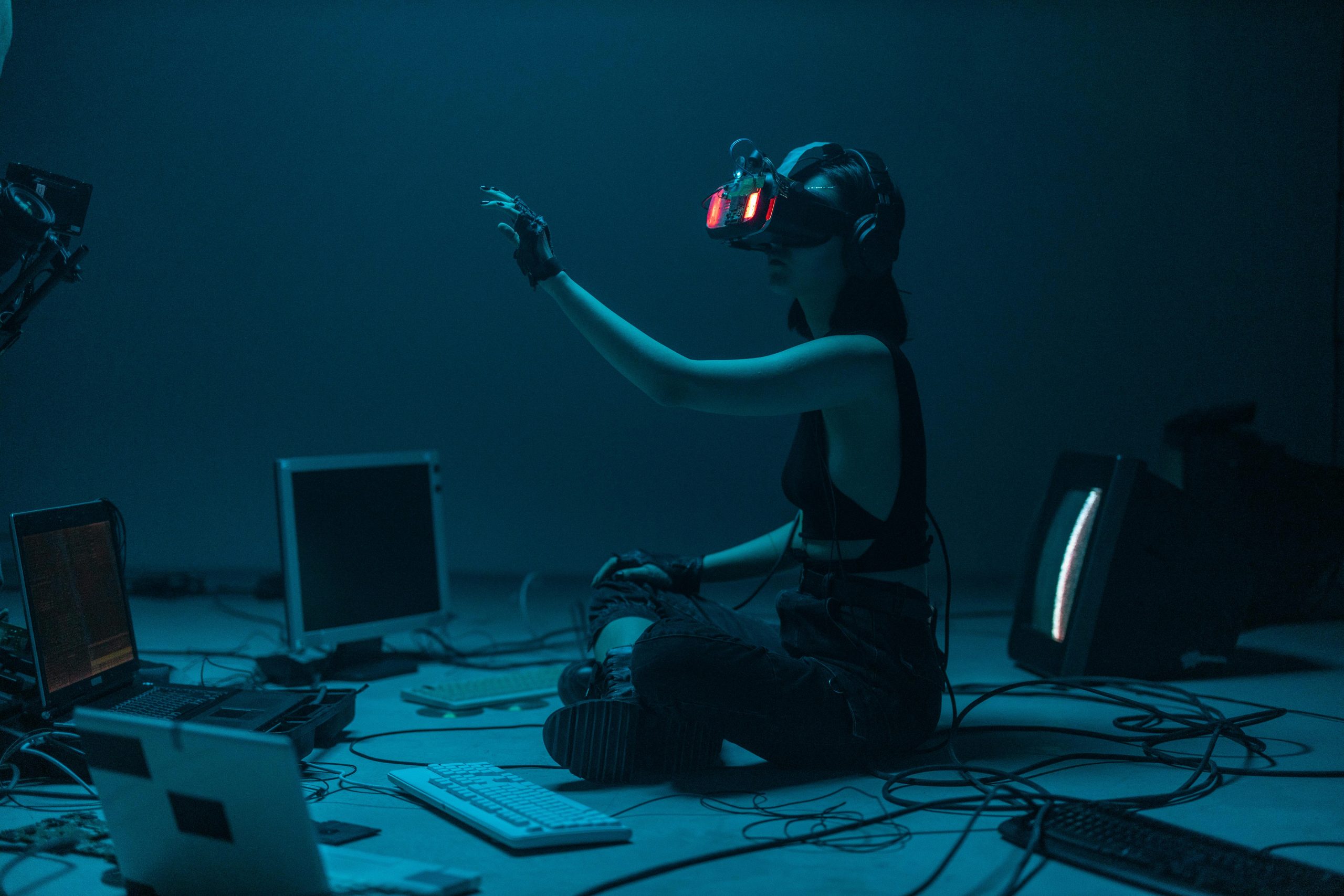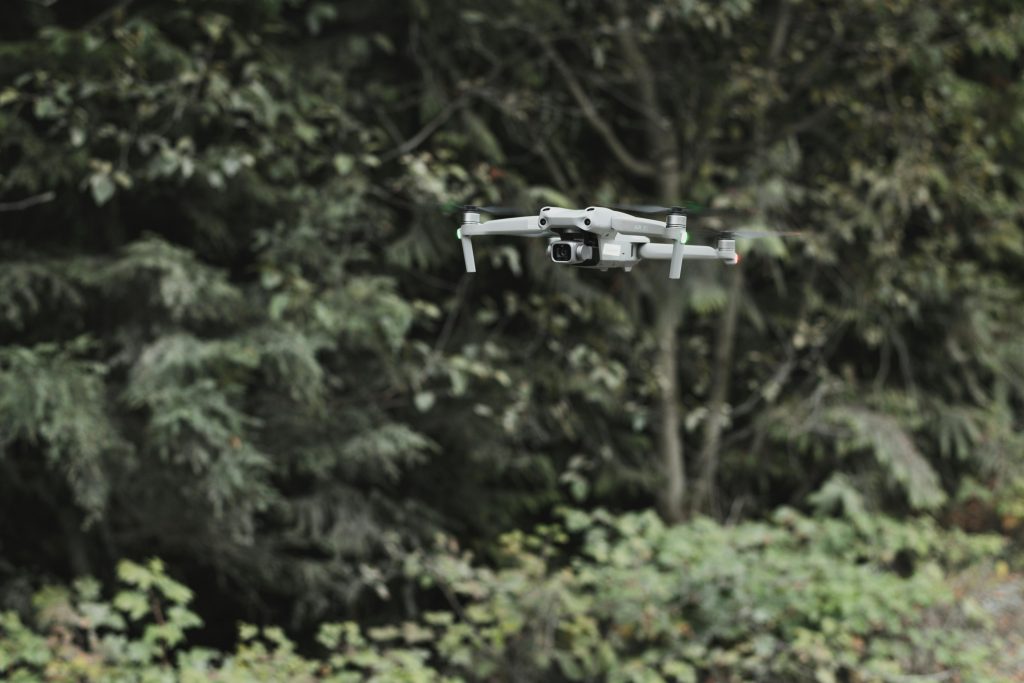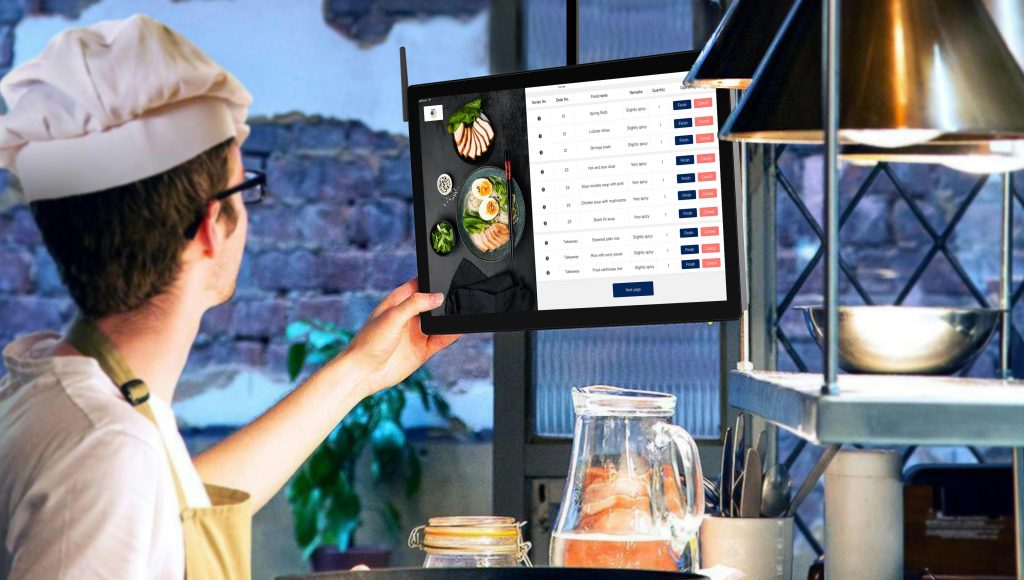Your cart is currently empty!

Table of Contents
- 1 Smart Homes
- 2 Health and Fitness
- 3 Travel and Adventure
- 4 Safety and Emergencies
- 5 Education
- 6 Pets and Animals
- 7 Helping People with Disabilities
- 8 Mental Health Support
- 9 Art and Creativity
- 10 Jobs and Work
- 11 Money and Budgeting
- 12 Entertainment
- 13 Hobbies and Fun Activities
- 14 Transportation
- 15 Shopping
- 16 Fashion and Style
- 17 Cooking and Food
- 18 Smart Farming and Food Production
- 19 Communication
- 20 Law and Justice
- 21 Science and Research
- 22 College and Career Planning
- 23 Environmental Impact
- 24 Real Estate and House Hunting
- 25 Future Prospects
- 26 Conclusion
Artificial intelligence is affecting every aspect of our lives and changing the way we work, play, and live. It has grown beyond just a concept in Science fiction. Let’s explore the ways in which artificial intelligence affects several aspects of our lives.
Smart Homes
Imagine that your house knows everything you want. There’s a place where the lighting turns on itself as soon as you walk in, the music begins as soon as you wake up, and the temperature is constant. Not a regular home, but an intelligent one!
We term such properties as “smart homes”. They make use of artificial intelligence (AI) to interpret your habits and activities. They take care of everything, acting as staff assistance. For instance, your smart home system can play relaxing tunes and automatically dim the lights at night if you enjoy reading a book.
But that’s just the beginning. Smart houses open up new possibilities! Even something as basic as turning on your Televison to your favorite channel or adjusting the temperature based on the weather and this is controlled by your appliances. Certainly smart homes even have security systems installed, including cameras that can detect intruders. Thus, even if they might seem unreal right now, smart houses are becoming more common.

Photo by John Tekeridis: https://www.pexels.com/photo/round-grey-speaker-on-brown-board-1072851/
Health and Fitness
Technology is also changing how we take care of ourselves. It’s similar to having a very educated health coach and a workout companion in one! Imagine if you had an app that knew your body better than you do? With fitness trackers and health applications, Technology is accomplishing this. They constantly monitor your heart rate, sleep habits, and number of steps. It’s like always having a little scientist watching you!
But AI is growing smarter; it’s not just about following. It is able to weigh all of that data and offer you advice. Do you require help with your weight loss? You might receive a customized meal plan from an AI. Do you want to put on weight? It can design the ideal routine of exercise for you. Additionally, meditation apps with AI support may be able to help you relax and de-stress if you’re feeling stressed.

Photo by Andrea Piacquadio from Pexels: https://www.pexels.com/photo/young-female-athlete-training-alone-on-treadmill-in-modern-gym-3768916/
Travel and Adventure
Planning a trip just got easier with AI! It’s like having a travel guide who knows everything about the world. AI can help you find the best places to visit based on what you like. Love beaches? AI can suggest the best ones. Want to hike? It can find great trails for you. It can even tell you the best time to go and how much it might cost.
When you’re traveling, AI can help you get around. Apps like Google Maps use AI to find the fastest routes and avoid traffic. Some AI tools can even translate signs or menus in other languages, so you don’t feel lost in a new country. Plus, AI is making travel safer by helping airplanes and trains run smoothly. With AI, exploring the world is more exciting and less stressful!

Photo by Andrea Piacquadio: https://www.pexels.com/photo/close-up-photo-of-smiling-woman-leaning-on-table-while-using-her-phone-3769741/
Safety and Emergencies
AI is helping keep us safe, like a superhero sidekick! It’s being used to make our neighborhoods and cities safer. For example, AI can watch security cameras and spot if something weird is happening, like someone trying to break into a house. It can then alert the police right away.
AI is also great for emergencies. It can help predict when bad things like earthquakes or storms might happen by looking at weather patterns. During emergencies, AI can help firefighters or doctors by telling them the fastest way to get to people who need help. It can even help find people who are lost by using drones to search big areas. AI is making the world a safer place for all of us.

Photo by Parveen Singh: https://www.pexels.com/photo/drone-flying-in-a-forest-19157340/
Education
The technology known as artificial intelligence is totally changing the way people learn! It’s like having a highly experienced tutor who knows how you study best. Think about a teacher who can change how fast they go of their lessons to meet your needs. They can move fast when you understand the material, gently when you are having trouble, and even give you more practice. That’s exactly what AI is doing! When learning is organized just for you, it becomes continually easier and more pleasant.
Technology has advantages for educators as well. It can mark papers, make lesson plans, and even determine which kids need extra help. How much do you know? Additionally, scheduling lessons and recording attendance can be aided by artificial intelligence. It’s similar to having a very well-planned private colleague! Thus, whether a teacher is attempting to keep 30 pupils in line or a student is trying to pass the math test, technology like AI is making life much easier and more fun for everyone!

Photo by Julia M Cameron: https://www.pexels.com/photo/photo-of-woman-tutoring-young-boy-4145354/
Pets and Animals
AI is even helping our furry friends! It’s like having a vet and a pet trainer all in one. Smart pet collars with AI can track your dog or cat’s activity, just like a fitness tracker for humans. They can tell you if your pet is running around enough or if they’re sleeping too much. Some even let you know if your pet is feeling sick by checking their heart rate.
AI can also help you understand your pet better. There are apps that use AI to listen to your pet’s barks or meows and tell you what they might mean. Plus, AI is being used to make pet toys smarter. Imagine a toy that plays with your dog when you’re not home! AI is making life better for pets and their owners by keeping them happy and healthy.

Photo by Blue Bird: https://www.pexels.com/photo/labrador-with-twig-in-mouth-in-park-7210634/
Helping People with Disabilities
AI is making life easier for people with disabilities, like a helpful friend who’s always there! It’s creating tools that help people see, hear, or move better. For example, AI can turn spoken words into text for someone who can’t hear well, so they don’t miss out on conversations. There are also apps that describe pictures or read books out loud for people who can’t see.
For people who have trouble moving, AI can control wheelchairs or robotic arms to help them do things on their own, like eating or picking up toys. AI is even helping kids with learning disabilities by making games that teach in a way that works best for them. It’s amazing how AI is giving everyone a chance to do more and feel included in the world!

Photo by SHVETS production: https://www.pexels.com/photo/a-man-on-a-wheelchair-8415633/
Mental Health Support
AI is also helping people take care of their minds, not just their bodies. There are apps powered by AI that help track your mood, remind you to take breaks, and even guide you through calming breathing exercises. Some tools use AI to chat with users like a friend, listening when you’re feeling down and offering positive messages or helpful tips. It’s not the same as talking to a real therapist, but it’s like having a little support system in your pocket. These apps can even suggest activities to lift your mood, like taking a walk, journaling, or calling a friend. This is great for students, workers, or anyone feeling stressed or anxious. With AI, taking care of mental health is becoming easier and more normal.

Photo by Ivan Samkov: https://www.pexels.com/photo/a-woman-lying-on-the-couch-6799981/
Art and Creativity
AI is turning everyone into an artist! It’s like having a magic paintbrush that helps you create amazing things. There are AI tools that can help you draw pictures, write songs, or even make videos. For example, you can tell an AI what kind of picture you want—like a dragon flying over a mountain—and it will draw it for you!
AI is also helping real artists by giving them new ideas. It can look at thousands of paintings or songs and suggest new styles to try. Even in schools, kids are using AI to make cool projects, like writing stories or designing posters. With AI, anyone can be creative, even if they’ve never tried before. It’s making art more fun for everyone!

Photo by Jakub Zerdzicki: https://www.pexels.com/photo/digital-artist-using-tablet-and-stylus-pen-29645160/
Jobs and Work
AI isn’t just for fun—it’s also helping people at work! It’s like having a super smart coworker who never gets tired. For example, AI can help doctors by looking at medical pictures, like X-rays, and pointing out things they might miss. This makes doctors’ jobs easier and helps patients get better faster.
In offices, AI can do boring tasks like sorting emails or making schedules, so people have more time to do creative work. It can also help factories make things faster by controlling machines and checking if products are made correctly. But AI is also creating new jobs, like teaching people how to use AI tools or fixing smart machines. So, while AI changes some jobs, it also brings new opportunities for everyone.

Photo by Startup Stock Photos: https://www.pexels.com/photo/chill-collaboration-couch-meeting-7113/
Money and Budgeting
AI is helping us manage our money better, like having a super smart piggy bank! It can make saving and spending easier for everyone. For example, there are apps that use AI to look at how you spend your money and give you tips on how to save more. If you’re spending too much on snacks, AI might suggest making a budget for treats.
AI can also help grown-ups with bigger money stuff, like paying bills or investing. It can remind you when a bill is due so you don’t forget, or it can suggest the best ways to save for something big, like a new bike. Some banks even use AI to spot if someone is trying to steal your money by looking for weird spending patterns. With AI, handling money is less stressful and more organized!

Photo by Mikhail Nilov: https://www.pexels.com/photo/a-woman-holding-smartphone-and-money-7735793/
Entertainment
The entertainment industry has been seriously influenced by technology known as AI. for instance, to provide specific advice on streaming services like Netflix and Spotify. Based on their past viewing or listening choices, users can use these recommendations to locate new films, TV shows, and music. AI also helps to increase the creativity of effects in movies, making them closer to reality and of higher quality. Artificial Intelligence (AI) in video games allows non-player characters (NPCs) to act far more accurately and wisely, which enhances the user experience. It also assists with scriptwriting and editing, allowing filmmakers to deliver better stories through analysis of trends and improved suggestions. Technology is generally raising the standard of entertainment.

Photo by Tima Miroshnichenko: https://www.pexels.com/photo/people-watching-movie-inside-the-theater-7991139/
Hobbies and Fun Activities
AI is making hobbies even more exciting, like having a buddy who’s great at everything! Whether you love gardening, photography, or playing board games, AI can help you get better and have more fun. For example, if you like taking pictures, AI apps can suggest the best angles or edit your photos to make them look amazing. Some apps can even turn your pictures into cool cartoons!
If you enjoy gardening, AI can help you grow better plants. Smart gardening tools use AI to check the soil and tell you when your plants need water or sunlight. AI can also make games more fun—imagine playing a board game where the pieces move on their own using AI to challenge you! With AI, your hobbies become more creative and enjoyable, and you can learn new skills faster.

Photo by Pixabay: https://www.pexels.com/photo/woman-holding-a-white-samsung-galaxy-android-smartphone-taking-a-photo-of-hallway-38266/
Transportation
Another Amazing industry that a technology known as AI has a big impact on is transportation. Artificial intelligence (AI) is used by self-driving cars to increase road safety and driving efficiency. These cars use sensors and cameras to recognize obstacles, make decisions in real time, and read traffic signals. AI also helps with public transportation system management by determining the best routes and schedules based on passenger demand and traffic patterns. In logistics, artificial intelligence (AI) is used to forecast the most fuel-efficient delivery routes, resulting in shorter delivery times. Package distribution, especially in distant areas, is being handled by drones equipped with intelligent systems capabilities. When all is said and done, Technology is expanding quickly, improving transportation effectiveness and safeguarding passengers.

Photo by Andrea Piacquadio: https://www.pexels.com/photo/woman-in-brown-jacket-driving-car-3785391/
Shopping
AI is also changing the way we shop! It’s exactly like carrying around the most intelligent personal shopper in your pocket. Imagine having someone pick out the perfect clothing for you as soon as you walk into a store, saving you the trouble of idly browsing through the internet to find what you’re looking for. That is the capability of AI!
Online shopping has undergone drastic shifts thanks to AI. These days, websites are able to figure out your interests for you and provide you stuff that you would find interesting. It’s like having a personal stylist who knows your style better than you do. Technology also assists shops in understanding what their clients wish to purchase so they can stock the right products. When you’re checking out, AI might also help you locate the best offers and even provide recommendations for other

Photo by Kevin Malik from Pexels: https://www.pexels.com/photo/a-woman-shopping-in-the-supermarket-9016541/
Fashion and Style
AI is like having a fashion expert who helps you look your best every day! It’s changing the way we pick clothes and style ourselves. Imagine an app that looks at a picture of you and suggests outfits that match your body type and favorite colors. AI can do that! It can even tell you what’s trending, so you’re always in style.
Online shopping for clothes is also getting better with AI. Some websites use AI to create virtual dressing rooms. You can see how a shirt or dress looks on you without even trying it on in real life. AI can also help designers make new clothes by looking at what people like and creating new patterns. It’s like having a creative partner that never runs out of ideas! With AI, fashion is more fun and personal.

Photo by Andrea Piacquadio from Pexels: https://www.pexels.com/photo/happy-woman-shopping-online-at-home-3769747/
Cooking and Food
Imagine having a kitchen helper that knows all your favorite recipes and can even suggest new meals! AI is making cooking super fun and easy. Smart kitchen gadgets, like ovens and fridges, can now use AI to help you. For example, a smart fridge can check what food you have and suggest recipes based on those ingredients. If you’re missing something, it can even order it for you online!
AI can also help you eat healthier. Apps powered by AI can look at what you eat every day and tell you if you’re getting enough veggies or if you’re eating too much sugar. It’s like having a food coach in your pocket! Plus, some AI tools can teach you how to cook better by giving you step-by-step instructions or even showing you videos. Cooking with AI makes meals tastier and saves time.

Photo by iMin Technology: https://www.pexels.com/photo/a-person-wearing-chef-hat-looking-at-a-flat-screen-with-menu-12935057/
Smart Farming and Food Production
AI is even helping farmers grow our food! With smart sensors and AI tools, farmers can check how healthy their crops are without walking through big fields. These tools can tell when plants need water, fertilizer, or protection from bugs. Drones with AI can fly over farms and take pictures to spot sick plants before it’s too late. This helps farmers save time, money, and water while growing more food. AI also helps decide the best time to plant and harvest based on weather data. Some AI systems are even helping farmers raise animals by tracking their health and making sure they’re comfortable. So next time you eat fruits, veggies, or meat, remember that AI may have helped it grow!

Photo by Quang Nguyen Vinh: https://www.pexels.com/photo/green-leafed-plants-2132171/
Communication
The communication sector is going through some exciting changes because of artificial intelligence. Chatbots that can respond to routine inquiries and issues 24/7 are one way Technology is being used to Improve customer’s service. Communicating with these chatbots is more like speaking with a real person because they can understand natural language. AI enables quick language translation as well as improving international communication, it aslso enables social media data sets, it is also used to comprehend public opinion and trends. This enables more efficient audience response for businesses and groups. All things considered, artificial intelligence promotes clearer, faster, and more effective communication.

Photo by Tracy Le Blanc: https://www.pexels.com/photo/person-holding-iphone-showing-social-networks-folder-607812/
Law and Justice
Believe it or not, AI is helping in courts and with the law, too! It can read through thousands of pages of legal documents really fast, helping lawyers find important information in less time. AI tools can also help judges by pointing out similar cases from the past, making it easier to make fair decisions. Some police departments use AI to help decide where to send officers based on crime patterns, which can make neighborhoods safer. But people are also watching closely to make sure AI in law is fair and doesn’t treat anyone unfairly. It’s a big job, but if used the right way, AI can help make the law faster, fairer, and easier for everyone to understand.

Photo by Sora Shimazaki: https://www.pexels.com/photo/asian-lawyer-working-with-laptop-near-scales-of-justice-5673480/
Science and Research
AI is like a genius lab assistant for scientists! It helps researchers solve big problems faster by looking through huge amounts of data. For example, AI helped scientists find new medicines and treatments during the COVID-19 pandemic. In space, AI helps NASA plan missions and control robots on other planets. It’s also helping find clean energy sources by testing ideas super fast. AI can even predict how diseases might spread or how climate change could affect our planet. This lets scientists focus more on inventing and discovering instead of spending hours on small tasks. With AI, science is moving faster, and amazing discoveries are happening every day.

Photo by cottonbro studio: https://www.pexels.com/photo/person-in-white-dress-shirt-using-laptop-8657292/
College and Career Planning
Planning for college or your future job? AI can help with that too! Some tools ask about your interests and suggest careers or courses that match. They even help you pick the best schools or create a study plan. It’s like having a career coach at your fingertips. With AI, students feel more prepared and confident about their future!

Photo by George Pak : https://www.pexels.com/photo/friends-in-graduation-gowns-and-mortarboards-holding-their-diplomas-7972746/
Environmental Impact
An important part of protecting the environment is being played by artificial intelligence. Data from sensors located in various places is checked by AI to keep an eye on the quality of the air and water. This aids scientists in monitoring pollution levels and detecting the origins of contamination. The Technology known as AI also helps with wildlife protection by counting animal populations and identifying illegal wildlife trade. This is done by analyzing photos from cameras in forests and oceans. Additionally, by studying weather data, AI aids in the prediction of natural disasters like floods and wildfires, enabling early warning systems and improved protection. All in all, artificial intelligence is a useful tool for keeping our environment safe and preserving our planet.

Photo by Sim Sam from Pexels: https://www.pexels.com/photo/clouds-over-a-river-in-autumn-21918870/
Real Estate and House Hunting
AI is helping people find their dream homes faster! Apps now use AI to suggest homes based on your needs—like your budget, favorite style, or neighborhood. Some even show 3D tours so you can “walk through” a house before visiting. Real estate agents use AI too, to predict house prices and trends. It makes house hunting easier and smarter for everyone!

Photo by Kindel Media from Pexels: https://www.pexels.com/photo/person-holding-a-miniature-wooden-house-7578864/
Future Prospects
Future developments across many fields are being greatly impacted by artificial intelligence (AI). Businesses may make more informed decisions about their investments and product selections by using artificial intelligence (AI) to forecast market trends. By interpreting huge amounts of data, for example, forecasts consumer behavior and preferences, allowing companies to create goods that have a better chance of succeeding. Through the prediction of patient outcomes and the recommendation of certain treatments, artificial intelligence (AI) in healthcare improves patient care and efficiency. In education, artificial intelligence (AI) helps personalize teachings to each student, strengthening, understanding and Student performance.
Conclusion
Our world is changing faster than ever, and AI is a big part of that! From cooking and fashion to keeping our pets happy and making art, AI is helping us in so many ways. It’s like having a super smart friend who’s always ready to help with anything. Whether it’s making our homes smarter, keeping us safe, or helping us explore the world, AI is making life more fun and easier every day.
But we need to be careful too. We should use AI in a way that’s good for people and the planet. Let’s keep learning about AI, trying new things, and thinking about how it can make the future even better. The possibilities are endless—maybe one day we’ll have AI that can help us explore space or solve big problems like hunger! Let’s work together to make sure AI helps everyone and makes the world an awesome place.
Stay informed, be open to new developments in AI, and consider how you could use this technology to your everyday life. Take part in the conversation on AI’s future and share your thoughts.
Leave a Reply